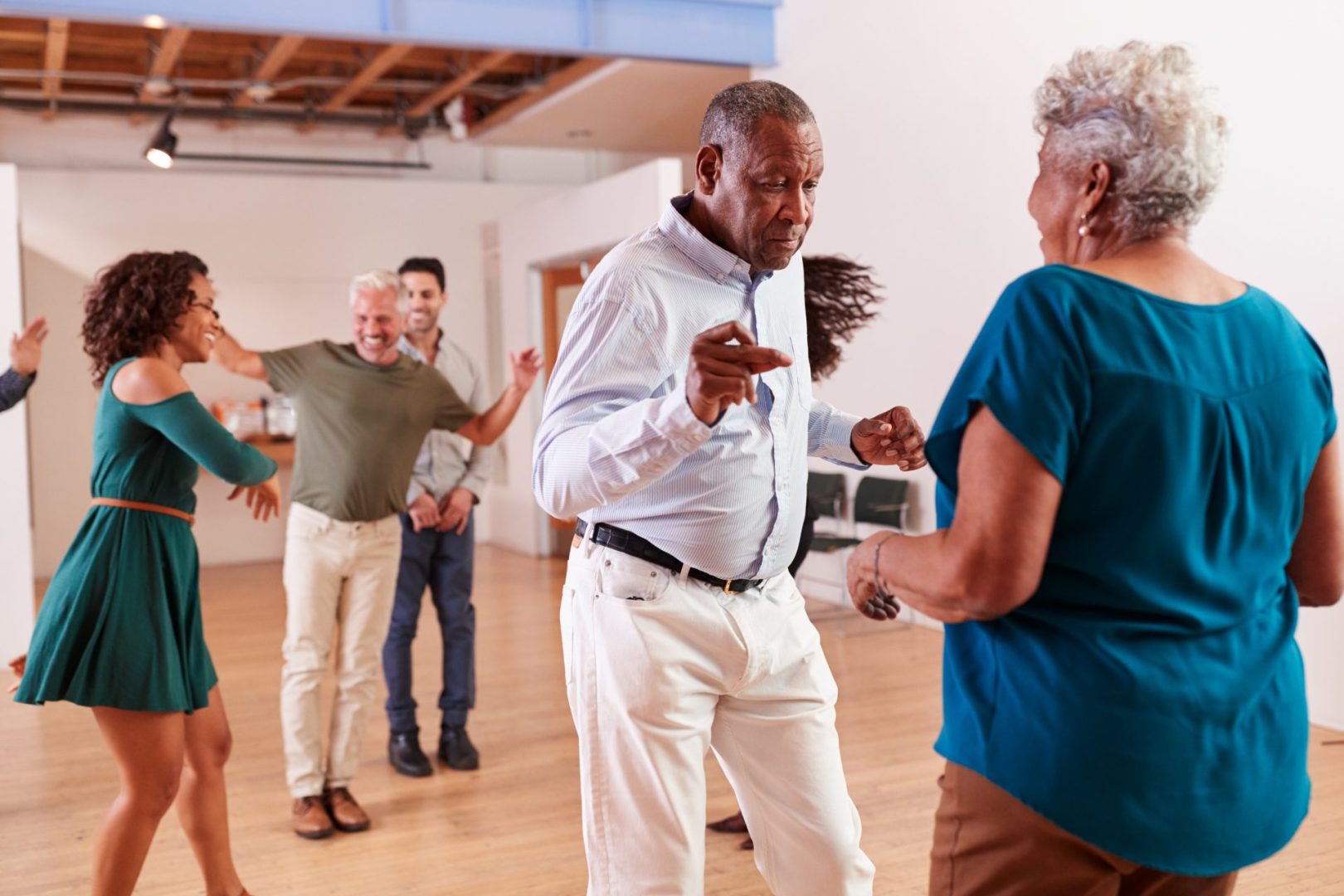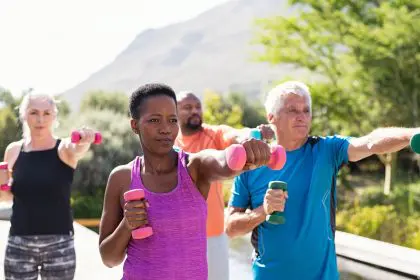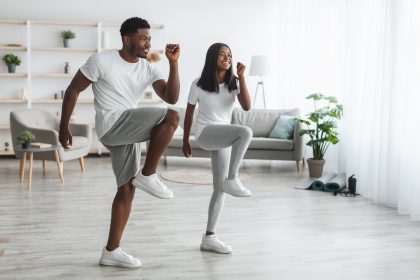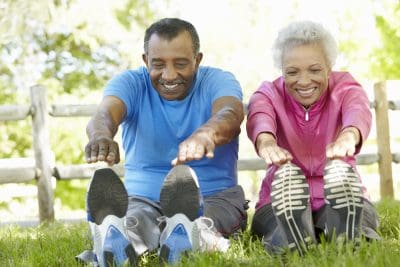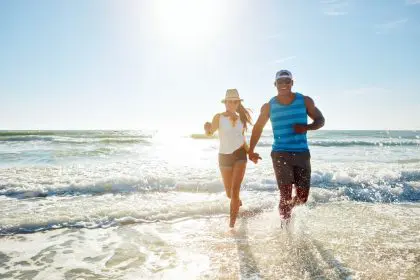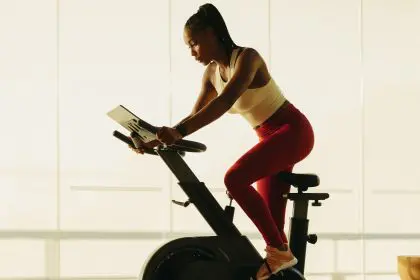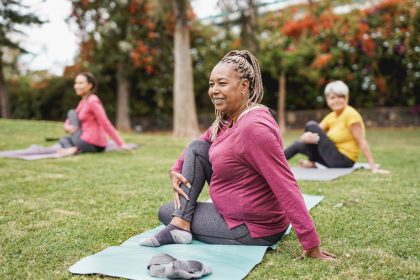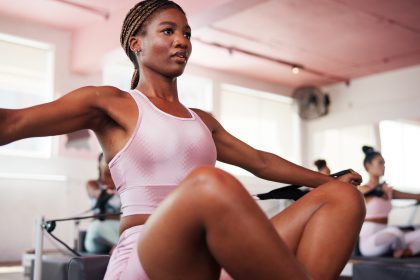The graceful movements of dance offer seniors a unique opportunity to enhance their stability. Regular participation in dance classes helps older adults maintain and improve their balance—a critical factor in preventing dangerous falls.
Dance requires controlled weight shifts, precise footwork, and proper posture, all of which contribute to better proprioception (the awareness of body position) and core strength. These physical benefits develop gradually as seniors progress through dance programs designed specifically for their needs and abilities.
Dance instructors who work with senior populations typically incorporate balance-focused exercises into their routines, often beginning with simple movements while holding onto a chair or barre for support. As strength increases, the movements become more challenging, allowing for continuous improvement without overwhelming participants.
The results speak for themselves: seniors who attend dance classes report feeling more confident when navigating everyday environments. This increased confidence often translates to greater independence and willingness to remain physically active in other areas of life.
Arthritis symptoms decrease with rhythmic movement
For the millions of seniors living with arthritis, finding comfortable yet effective exercise can be challenging. Dance offers a solution by providing gentle, rhythmic movements that lubricate joints and reduce stiffness without the jarring impact of many traditional workouts.
The flowing nature of dance styles like tai chi, water dance, and modified ballroom dancing creates smooth, controlled motions that help maintain joint function while minimizing pain. The warmth generated during dance activity increases blood circulation to affected areas, which can temporarily reduce discomfort and improve mobility.
Dance classes tailored for seniors often include modifications that accommodate various levels of joint flexibility. Participants can adjust movements based on their comfort level while still enjoying the benefits of physical activity. Over time, many seniors experience improved range of motion in previously restricted joints.
The consistent, gentle stretching involved in dance also helps maintain muscle length and flexibility around arthritic joints, providing better support and potentially slowing further deterioration. This makes dance an ideal exercise option for long-term management of arthritic conditions in older adults.
Memory and focus sharpen through dance choreography
Dance stands out among exercise options for its impressive cognitive benefits. Learning and remembering choreography engages multiple brain areas simultaneously, creating new neural pathways that help maintain mental acuity.
The process of memorizing dance steps requires concentration, spatial awareness, and sequential thinking—all valuable cognitive skills that tend to decline with age. When seniors regularly practice dance routines, they essentially give their brains a comprehensive workout alongside their bodies.
Research shows that dancing may reduce the risk of dementia more effectively than many other forms of physical activity. This protection likely stems from the unique combination of physical movement, musical engagement, social interaction, and mental challenge that dance provides.
Dance classes often incorporate progressive learning, where new movements build upon previously mastered steps. This approach creates an ongoing cognitive challenge that adapts to the participant’s abilities, providing consistent mental stimulation regardless of skill level.
Social connections flourish in group dance settings
Perhaps one of the most valuable aspects of dance for seniors goes beyond physical benefits. Dance classes create natural social environments where participants bond through shared experiences and mutual support.
Many older adults face increasing isolation as they age, which can contribute to depression and cognitive decline. Regular attendance at dance classes provides consistent social contact in a positive, supportive atmosphere where making friends happens organically through shared activity.
Dance often involves partner work or group formations, creating natural opportunities for interaction and cooperation. These social dynamics foster a sense of belonging and community that many seniors find increasingly difficult to establish in other settings.
The shared experience of learning new skills, celebrating improvements, and occasionally laughing at mistakes creates bonds between participants. These connections often extend beyond the dance studio, with many seniors forming friendships that enrich their lives through additional social activities.
Emotional wellbeing improves through expressive movement
Dance offers a powerful emotional outlet through expressive movement. For seniors dealing with stress, grief, or other emotional challenges, dance provides a healthy way to process feelings without necessarily having to verbalize them.
The combination of music and movement stimulates the release of endorphins—natural mood elevators that reduce stress and create feelings of happiness. Many seniors report leaving dance classes feeling emotionally lighter and more positive about life in general.
Dance allows for personal expression within its structured forms, giving seniors a sense of creative freedom that may be lacking in other areas of their lives. This creativity satisfies a fundamental human need for self-expression that remains important regardless of age.
The accomplishment of mastering new movements or routines also builds self-esteem and confidence. These positive emotional experiences create an upward spiral of wellbeing that extends into other aspects of seniors’ lives.
Cardiovascular health develops through rhythmic activity
The aerobic nature of most dance styles provides valuable cardiovascular benefits without the intensity of traditional gym workouts. Dance raises the heart rate into a beneficial zone while remaining enjoyable and sustainable for older adults.
Regular participation in dance classes helps maintain healthy blood pressure levels and improves circulation throughout the body. These cardiovascular improvements support overall health and can help manage conditions common among seniors.
Dance instructors for senior classes typically incorporate intervals of more intense movement followed by recovery periods, creating an ideal pattern for heart health improvement. This approach allows participants to build endurance gradually without overexertion.
The continuous movement in dance also helps seniors maintain a healthy weight, which further supports heart health. Many participants find dance so enjoyable that they remain consistent with classes, achieving better long-term cardiovascular results than with exercise programs they find less engaging.
Modified movements make dance accessible for all abilities
One of the greatest strengths of dance as exercise for seniors lies in its adaptability. Professional dance instructors who work with older populations understand how to modify movements to accommodate varying abilities while maintaining the essence of the dance.
Seated dance options exist for those with mobility limitations, allowing participants to experience the joy of movement and music without standing. Chair-supported dancing serves as an excellent transition activity for those building strength before attempting fully independent movement.
Water-based dance classes offer another modification that reduces impact and supports joints through buoyancy. These classes provide resistance for strength building while minimizing fall risk and joint stress.
The progressive nature of dance instruction allows seniors to advance at their own pace, gradually taking on more challenging movements as their abilities improve. This individualized approach makes dance uniquely suited to the diverse physical conditions present among older adults.
Many senior centers, community recreation departments, and dance studios now offer specialized classes designed specifically for older adults. These programs recognize the unique needs of senior dancers while celebrating their continuing ability to learn and grow through movement.
With its combination of physical, cognitive, emotional, and social benefits, dance truly stands as the complete exercise package for seniors seeking to maintain their health and enhance their quality of life through enjoyable, sustainable activity.

